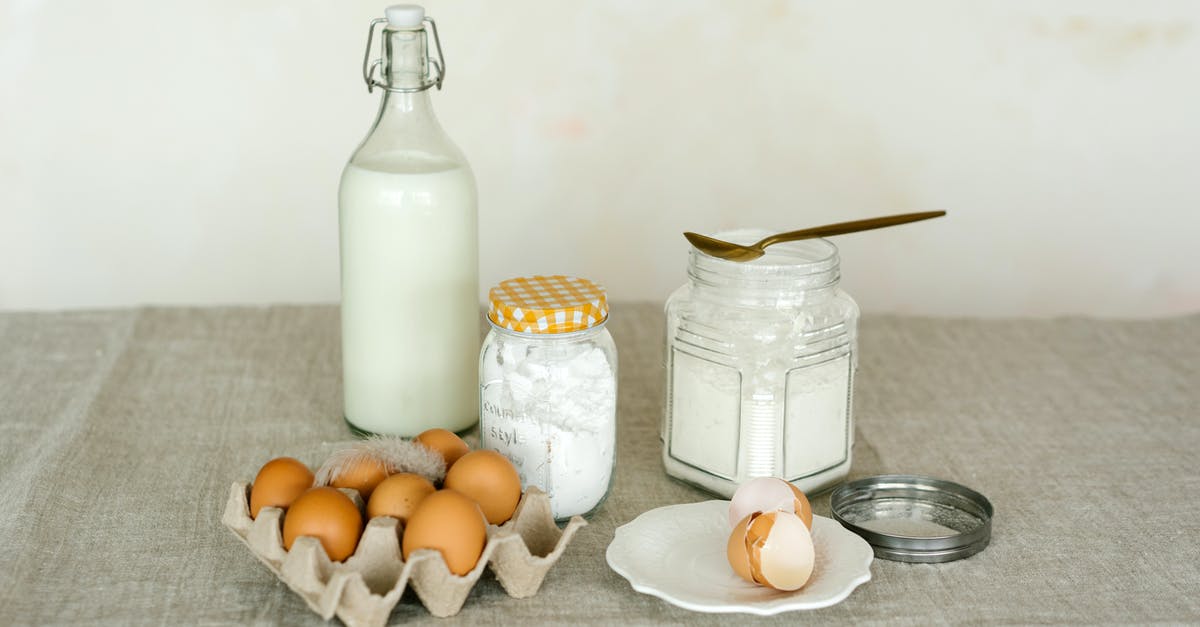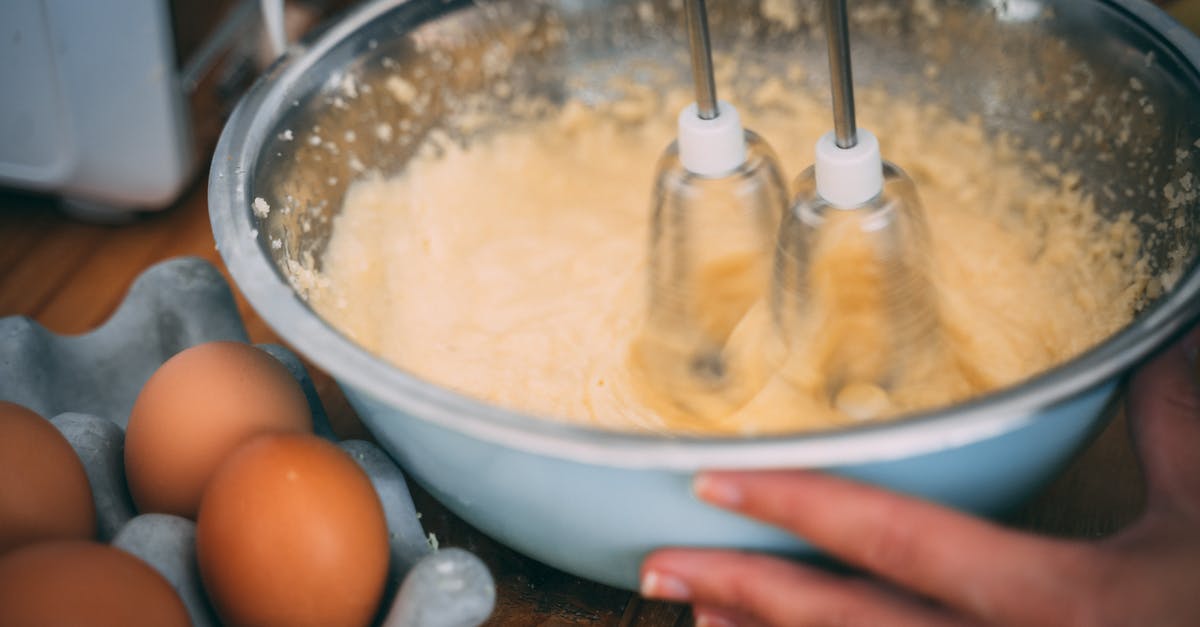Why doesn't milk create gluten when combined with flour?

I wanted to make a simple pizza, but as I read the recipe, I began to wonder about the chemistry behind it.
When flour and water come together, gluten starts to form. We know that. But why doesn't gluten form when only flour and milk come together? 87 percent of the milk consists of water. When I whip the milk and flour, there is no elastic structure.
Best Answer
Milk does create gluten1 when combined with flour. The water in the milk does create a gluten structure. If it didn't, any bread made with milk would be dense and flat. But the dinner rolls I made yesterday (with no water, only milk) were light and airy. Milk clearly creates gluten.
Note that gluten isn't only about elasticity. Beginning bread makers often associate gluten with stretchiness, but gluten is also necessary for the structure of bread. Without gluten development, bread won't rise high. Without gluten, gases will escape and bubble out, rather than stay in the dough. Without gluten, the final risen loaf of bread could collapse into a flat, dense pancake. Different doughs may be easier or harder to stretch into long strands, but that's not all that gluten development is about.
The other ingredients in milk will tend to alter how gluten behaves. As Jeffrey Hamelman notes in his book Bread: A Baker's Book of Techniques and Recipes:
Although the lactic acid in milk tightens the gluten structure, the fats present soften the structure, and the result is baked products that have less elasticity and an even grain. [...] When milk is used in yeast breads, it should be heated to about 190°F, a temperature higher than pasteurization, in order to denature the serum protein. Unheated, the serum is active and has a weakening effect on the structure of the gluten. Bakers often replace whole milk in formulas with dried milk, first for convenience, and second because the serum protein is deactivated in dry milk.
A couple takeaways from that:
- Milk tightens the gluten structure (which means it won't stretch as easily)
- The fats in milk soften the structure, leading to more fine-grained bonding
- Some milk proteins can weaken the gluten structure (which will make the dough easier to tear and bread won't rise quite as high; as Hamelman mentions, a remedy for this is using heated milk or dried milk, but bakers often also just use a high-protein flour that generates more gluten to begin with)
The question specifically mentions pizza, and the above issues are one reason that milk is less commonly found in pizza doughs than in things like soft rolls or soft white bread. Pizza dough needs to stretch easily, and it needs a very strong gluten structure to be stretched thinly. (Also, the sugars in milk will cause faster browning, which for pizza baked at high temperature may result in a crust that's quite dark.)
1 In response to a comment, I should clarify what I mean as the word gluten is used in modern English in several different ways. Gluten comes from a Latin word for "glue" and, when used in the context of preparing dough, generally refers to a network created when certain proteins combine with liquid to form a sticky and elastic mass. The properties of the combined liquid and protein mixture are different from the protein alone, so most cooks use the word gluten to make reference to this specific mixture and its properties.
Nevertheless, as the proteins that occur in flour were isolated historically, the term gluten (or glutens, in plural; in wheat specifically called glutenins and gliadins) also came to refer to the specific proteins generally involved in creating this structure. Hence, one may also use the word "gluten" sometimes to refer to proteins in flour even when it is dry. And this dry substance can be isolated and sold separately as "wheat gluten." (Important note: occasionally, one sees people using the word "gluten" as a synonym for "protein content" of flour. However, other proteins that are non-glutinous may be found in flour as well, so the total protein content -- often found on labels -- is often different from the fractional amount of that which is gluten.)
This ambiguity of usage -- a wet, elastic substance vs. the dry ingredient that enables its creation -- can be found in many sources. For a few examples, Harold McGee in On Food and Cooking writes:
Gluten is a complex mixture of certain wheat proteins that can't dissolve in water, but do form associations with water molecules and with each other. When the proteins are dry, they're immobile and inert. When wetted with water, they can change their shape, move relative to each other, and form and break bonds with each other.
Here McGee tends toward the second usage, but in subsequent paragraphs he switches nomenclature to refer to the dry components as "glutenins" and concludes by noting: "The result [of bonding and stretching of glutenins] is an extensive interconnected network of coiled proteins, the gluten." Thus, in McGee's usage, "the gluten" only comes into being in the presence of liquids, conforming to the first usage.
Michel Suas in Advanced Bread and Pastry tends toward the first usage, stating:
The two primary proteins in wheat -- glutenin [...] and gliadin [...] -- are responsible for the formation of the dough. Depending on their quality, these proteins can absorb 200 to 250 percent of their weight in water. As they inflate, they become attracted to each other and form chains of proteins called gluten.
Some sources go further and even deny the existence of dry gluten (a view conflicting with the standard second English usage and product labeling). For example, Modernist Cuisine states:
Gluten is formed when two of wheat’s native proteins, glutenin and gliadin, come into contact with water. That’s why it’s more accurate to talk about the gluten potential of a particular flour, rather than its gluten content.
In any case, it's important to note the distinct meanings of the two uses of the word gluten in English, which can usually be understood from context. In dough formation, as here, it's quite common to talk about the "formation of gluten" through the addition of liquid, which is what I assume OP was referring to by the phrase "create gluten," a phrase I also incorporated into my answer.
Pictures about "Why doesn't milk create gluten when combined with flour?"



What happens when milk is added to flour?
Always use plain white flour when mixing flour and milk. Flour and milk can form the base of a great white sauce or roux, or can become a cooking disaster. However, just as there is more than one reason why flour can turn hard and lumpy when you mix it with milk, there is more than one way to ensure it does not.Which ingredient prevents gluten from forming?
Solid fats, oils, and egg yolks coat gluten proteins and prevent them from forming long, strong strands. Ever wondered why shortening is called shortening? Because it shortens gluten. Fat can also make flour water-resistant.Does flour and liquid make gluten?
Here's what you need to know: When you add liquid to flour, gluten starts to form. Additional agitation \u2014 like kneading, folding, or mixing \u2014 continues to develop that gluten, making the protein bonds stronger. How strong that gluten becomes affects your baked goods.Why is gluten not forming in dough?
When flour made from grinding these grains is mixed with water the two proteins combine and form gluten. Without water, gluten is not formed. The more the dough is mixed, the more gluten is developed.Why Doesn’t Yeat Say Nigga
More answers regarding why doesn't milk create gluten when combined with flour?
Answer 2
Let's start with what Gluten development actually is. It's the process of developing the protein in flour, gluten, into a web that traps air into it.
Water is essential for this web, and as you mention 87% of milk is water. However, 3% of milk (whole milk, at least) is fat.
This fat will coat the gluten molecules, preventing them from being shaped into a gluten web. A barrier is essentially formed between the proteins and they can no longer meld and developer together.
This is also why Brioche uses a ton of fat in it. The fat will give it a fine, soft crumb.
Sources: Stack Exchange - This article follows the attribution requirements of Stack Exchange and is licensed under CC BY-SA 3.0.
Images: Nicole Michalou, Mikhail Nilov, Taryn Elliott, Nicole Michalou
